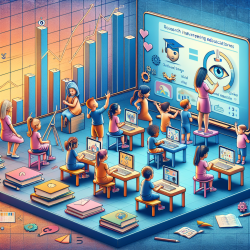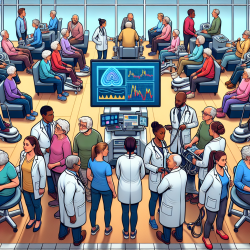Introduction
The intersection of technology and healthcare has opened new avenues for improving mental health outcomes, particularly for children. The recent research article, "Future of Mental Health in the Metaverse," delves into the potential of virtual reality (VR), augmented reality (AR), and mixed reality (MR) as transformative tools in mental health treatment. This blog explores how practitioners can harness these technologies to enhance their skills and improve outcomes for children, based on the findings of the research.
Understanding the Metaverse and Its Implications
The metaverse, a convergence of VR and physical reality, offers a 3D immersive environment that can simulate real-world scenarios. This digital space allows for personalized experiences, making it a promising tool for mental health interventions. The research highlights the use of VR, AR, and MR in diagnosing and treating mental health disorders, which can be particularly beneficial in addressing the shortage of mental health professionals and improving access to care.
Applications in Child Mental Health
For children, the metaverse presents unique opportunities to engage in therapeutic interventions in a controlled and safe environment. Here are some key applications:
- Attention Deficit Hyperactivity Disorder (ADHD): VR-based tools have shown promise in diagnosing and treating ADHD in children. The engaging environments of VR improve compliance and help children learn coping mechanisms.
- Autism Spectrum Disorders: VR cognitive therapy can simulate social interactions, aiding children with autism in developing social skills and improving cognitive functions.
- Anxiety and Phobias: VR exposure therapy allows children to confront fears in a controlled setting, gradually reducing anxiety and building resilience.
Advantages of VR-Based Interventions
VR-based interventions offer several advantages over traditional methods:
- Remote Access: VR eliminates geographical barriers, allowing practitioners to reach children in remote or underserved areas.
- Personalization: Virtual environments can be tailored to individual needs, enhancing the effectiveness of interventions.
- Engagement: The immersive nature of VR keeps children engaged, improving adherence to therapeutic protocols.
Challenges and Considerations
While the potential of the metaverse is vast, there are challenges to consider:
- Access and Equity: Not all children have access to the technology required for VR interventions, which may widen existing disparities in mental health care.
- Screen Time: Excessive screen time can have negative effects on attention spans and mental health, necessitating balanced use of VR.
- Ethical Concerns: The anonymity of the metaverse may lead to ethical dilemmas, particularly in safeguarding children from inappropriate content or interactions.
Encouraging Further Research
The research underscores the need for further studies to validate the long-term efficacy of metaverse-driven interventions. Practitioners are encouraged to engage in research that explores the diverse applications of VR, AR, and MR in child mental health. By contributing to this growing body of knowledge, practitioners can help shape the future of mental health care in the digital age.
To read the original research paper, please follow this link: Future of mental health in the metaverse.










